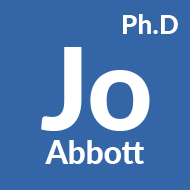HODA-A is a cutting-edge framework that bridges the gap between manual therapy and scientific precision. Developed by Dr. Jo Abbott (Ph.D.), HODA-A offers a validated and structured approach to hands-on clinical assessment—one that turns your touch into a data-driven, repeatable tool.
For decades, hands-on therapy has been criticized for being unreliable. But what if the problem wasn’t the hands—but the way we studied them?
HODA-A redefines manual therapy as a science of measurement.
What is HODA-A?
Why Does HODA-A Matter?
For years, the physiotherapy world has debated the reliability of hands-on techniques. Research often concluded that manual therapy lacked precision, yet practitioners knew its value in real-world care. What if the research was flawed, not the method?
HODA-A is the world’s first framework that transforms your touch into a measurable, validated, and repeatable clinical tool.
It’s not just about “feeling better”—it’s about knowing better.
HODA-A: The New Standard in Hands-On Precision
For 80 years, manual therapy was called unreliable—not because it failed, but because it was never measured correctly. HODA-A changes everything.
HODA-A: The Missing Link in Modern MSK Care
A breakthrough, evidence-based approach empowering clinicians—from physios to surgeons—to turn hands-on care into data-driven diagnosis.
HODA-A Certification: Master the Science of Clinical Touch
Backed by PhD-led research, HODA-A turns your hands into gold-standard diagnostic tools—bridging the gap between average and exceptional.
What you'll discover
Train your hands to collect reliable clinical data
Interpret subtle cues through refined touch
Calibrate your sensory skills with the same rigour used in high-tech diagnostics
Build a personal signature of precision as a practitioner
What you'll gain
Greater clinical confidence: Know that your hands are giving you valid information
Sharper diagnostic skills: Detect subtle differences in tissue, force, and function
Enhanced treatment precision: Make more informed manual therapy decisions
Professional advantage: Stand out with a future-ready skillset and HODA-A certification
HODA-A® Lecture Webinar
The Science of Hands as Measurement Tools
1 Year Live • Now Available On-Demand
After a year of powerful live teaching, deep clinician dialogue, and global feedback, the HODA-A® Lecture Webinar is now available as a professionally recorded on-demand experience — so you can access this paradigm-shifting work anytime, anywhere.
This is not just another CPD lecture.
This is a gateway into a new way of thinking about hands-on assessment, perception, reliability, and clinical intelligence.
HODA-A® (Hands-On Data Acquisition & Analysis) reframes the clinician’s hands as calibratable instruments and explores how sensory skill, attention, and neurophysiology determine the quality of what we think we “feel.”
If you’ve ever questioned:
-
Why palpation feels inconsistent
-
Why two clinicians can feel completely different things
-
Why research keeps failing hands-on work
…this lecture gives you the answers.
What You’ll Gain From This Lecture
By the end of this session, you will understand:
✅ Why manual therapy has failed to achieve true scientific validation — and how to fix it
✅ How your nervous system shapes what you feel under your fingertips
✅ The gap between reliability and validity in hands-on assessment
✅ Why calibration of the clinician is the missing link in MSK healthcare
✅ How HODA-A® creates a bridge between science and skilled touch
This is essential viewing for practitioners who want to stay ahead of the curve in MSK care.
Who This Is For
This lecture is designed for:
-
Physiotherapists
-
Osteopaths
-
Chiropractors
-
Sports therapists
-
Manual therapists
-
Bodyworkers
-
Movement specialists
-
Educators and researchers
If your work relies on touch, this lecture will change the way you practice.
Why This Matters Now
Healthcare is evolving.
AI can read scans.
Machines can track movement.
Apps can deliver exercise.
But only a trained human nervous system can detect the subtle, relational, living data found through intentional touch.
HODA-A® gives you the framework to make this measurable, repeatable, and teachable.
You’re not just learning a technique.
You’re upgrading your perception.
On-Demand Access
🎥 Professionally recorded HD lecture
📚 Structured learning pathway
🧠 Clear clinical frameworks
✅ Watch at your own pace
🌍 Access on any device
Call to Action Options
Button ideas:
👉 Watch the HODA-A® Lecture Now
👉 Access the Recording
👉 Begin Your HODA-A® Journey
👉 Upgrade Your Clinical Touch


